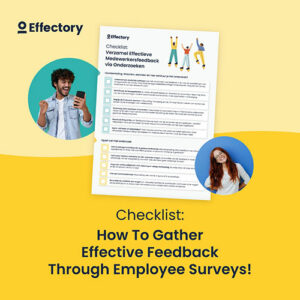We’ve already written about what to take into account before getting started with employee feedback, if you retrieve feedback via a questionnaire, if you get feedback through interviews or a panel. We shared our tips for a good start of a feedback course and for during and after the research. This time attention is paid to the analysis of the results. It is important to make a structured and clear report so that you can actually get started with the results.
Tips for successful analysis and reporting of employee feedback

Create reports
The report should include the goals, purpose and results of the research. Why was an employee survey carried out in the first place? What was the response rate or how many subjects did you speak with? And of course: what was the main feedback you received? Keep it as complete, although as short as possible. Quantitative scores are processed by means of a statistical analysis. Viewing the answers to open questions is important to understand the motivations of your employees.
What does the report look like?
It’s smart to report the feedback visually – use graphs, charts, icons and tables so you can see at a glance how the organisation faired. Provide visual cues where you can by using colours that indicate positive results (green) and where there is room for improvement (red). Try to include the answers to open questions in a limited number of categories.
How to gather feedback from your employees
The definitive checklist for creating your employee engagement survey.
DownloadSet priorities
What do your employees find the most important point to improve? With a methodological framework you clearly set the priorities of the survey. By doing so, it’s easier to calculate the influence of each factor on employee experience. This will give you a clear set of priorities that includes the most important aspects that affect a positive work experience.
Benchmark
It is also of great value to compare the feedback with other teams, organisations, branches, and countries. It helps put results into perspective, giving you a clearer understanding of what is really going on within your company. There is often a lot of time and money wasted by drawing hasty and incomplete conclusion.
Growing learning ability
Compare your feedback with feedback from previous employee surveys to identify patterns and trends. You’ll know exactly how successful actions from improvement are, and whether your organisation’s learning ability in continuing to grow. Communicate as clearly as possible to your employees to show that their feedback is being listened to. If employees see that their ideas are responsible for lasting improvements, their motivation will skyrocket. This is more than enough reason to continuously implement projects for gathering employee feedback!
Want more tips to successfully gather feedback from your employees?
Make sure your quest for gathering feedback from your employees is successful by thinking carefully about the topics above. Our free checklist provides more practical tips for you when you get started with feedback from your employees.
Free checklist: Send feedback to employees
At Effectory we believe that organizations that listen to the feedback and ideas of their employees are more successful. No one better than your own employees know what can be done better, smarter and in a more customer-oriented way. By involving employees in the organisation though gathering their feedback, they in turn become more engaged and committed. The best, most innovative companies listen to their employees.
